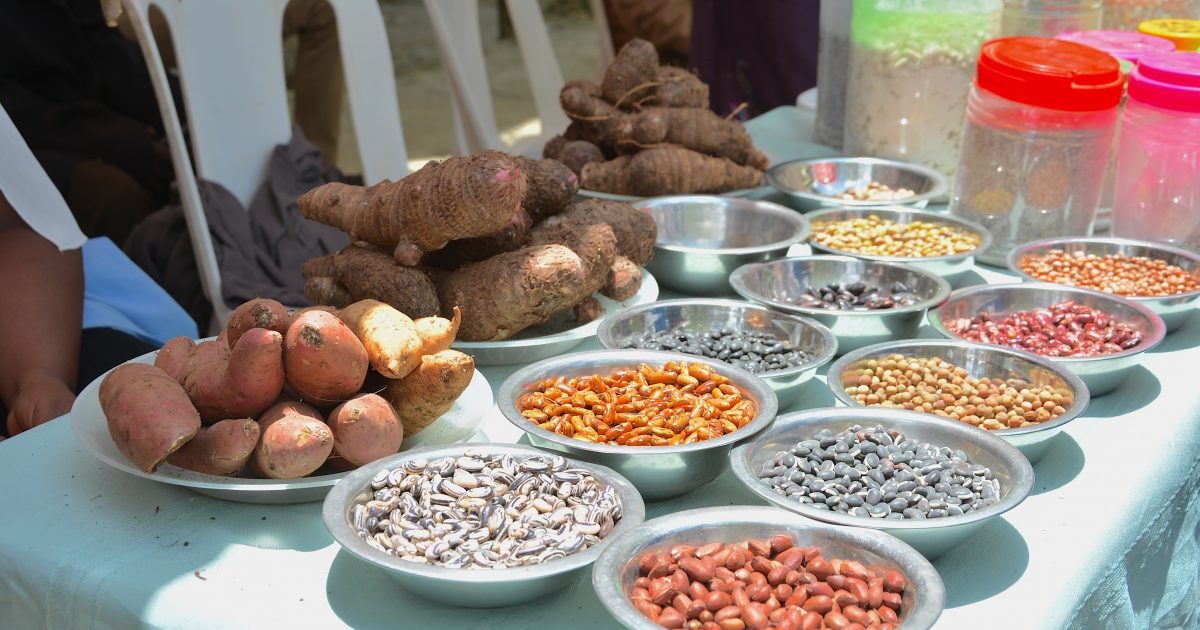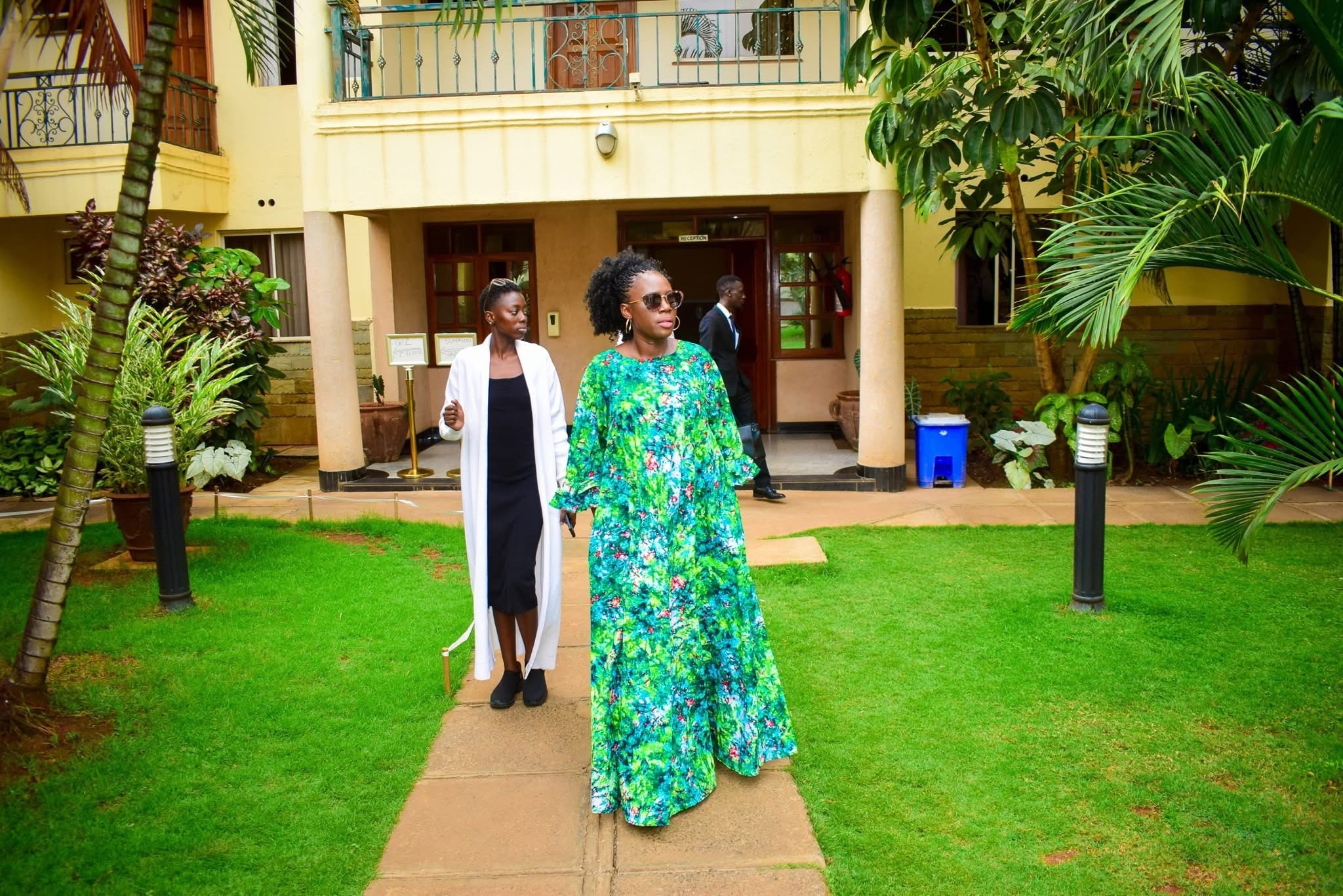
Indigenous seeds are produced, selected, and managed by local communities over generations.
They naturally adapt to local environmental factors, making them well-suited to their growing environments. Farmers in Tharaka Nithi employ ingenious techniques to ensure the longevity of indigenous seed varieties.
For generations, women in Tharaka Nithi have been regarded as experts in the selection, production, preservation, and cultivation of indigenous seeds, including millet, sorghum, kunde (cow peas) leaves, beans, and pumpkins, among others. Alice Kaburia, 48, learned seed preservation from her mother as a young girl. She shared how the process is carried out.
“I learned this skill very early from my mother, and even now, she still practises it. She has a specific house where she preserves seeds. I grew up seeing her do it,” she said. The process begins with selecting the best plants to grow, such as sorghum. The women harvest the seeds, store them, replant them, harvest again, and finally hang the sorghum in the kitchen to dry.
Once the sorghum is dry, the seeds are carefully removed and preserved using ash or pepper, stored in pots. Kaburia explained that these natural preservatives play a key role in protecting the seeds from pests and diseases.
According to Simon Mitambo, CEO of the Society for
Alternative Learning and Transformation (SALT), an organisation dedicated to
biodiversity preservation, indigenous seed preservation not only strengthens
the community’s food security but is also considered sacred.
“We view seeds holistically and treasure seed
preservation in Tharaka Nithi. When we talk about seeds, we’re not just
referring to plants but also animals and humans. It’s a sacred practice,” he
said.
Indigenous seeds have diverse genetic traits,
making them more resistant to pests, diseases, and climate change compared to
commercially bred varieties.
“We must embrace traditional ways of farming,” said
Mitambo during one of SALT’s monthly community meetings.
Mitambo is optimistic that in the coming years, the
community will advance their indigenous seed preservation efforts by
establishing a gene bank facility. “We’re seriously considering it,” he
said.
Plant gene banks are technical facilities that
store plant genes, mainly seeds, in cool, dry conditions. This setup slows down
the deterioration of seeds, which can otherwise be catalysed by oxygen, high
temperatures, and moisture.
Historically, the Tharaka community has been known
as agro-pastoralists, relying on subsistence farming of indigenous crops like
maize, beans, sorghum, millet, sweet potatoes, yams, and fruits. They also kept
cattle, goats, and sheep and practised beekeeping, traditions they still value
today.
In addition to seed preservation, organic
farming—often referred to as an ancient method of farming—plays a vital role in
nurturing indigenous crops in Tharaka Nithi.
Organic farming relies on natural processes rather than synthetic inputs, such as chemicals, to grow crops and raise livestock. It is regarded as the healthiest and most sustainable way to farm.
This farming technique offers numerous benefits,
including soil enrichment, environmental sustainability, healthy living,
preservation of biodiversity, economic empowerment, and water conservation.
In recent years, Kenya has seen a notable rise in
farmers adopting organic farming, despite the widespread use of modern
agricultural techniques.
According to the 2024 Kenya Organic Data Survey
Report by the Kenya Organic Agriculture Network (KOAN), the number of organic
farms in Kenya increased from 8,004 in 2007 to 62,626 in 2022. Additionally,
organic farmland expanded from 84,538 hectares in 2007 to 171,298 hectares in
2022.
Kaburia explained that farmers in her community use
herbal concoctions to spray their crops, effectively controlling pests and
diseases. This method has also resulted in high-quality seeds and produce,
which benefit consumers’ health.
“We preserve and grow seeds using traditional
methods, which are much healthier than using chemicals. We make our own sprays
from herbs like pepper, and they protect seeds from pests. These methods are
not only beneficial for health but also help us maintain high-quality seeds,”
she said.
Farmers also use cow dung and ash as manure,
avoiding synthetic fertilisers entirely.
Statistics from the Kenya Plant Health Inspectorate
Service (KEPHIS) reveal that the informal (indigenous) seed sector in Kenya
accounts for 60–70 per cent of the seeds planted by farmers nationwide.
Kaburia, a mother of five, continues to pass on her
knowledge of seed preservation and organic farming to her children and other
community members.
“Yes, I do. I teach my children and other children
as well. My house has many pots, and they are always curious about what’s
inside. I take time to explain the entire process to them,” she said.
The Society for Alternative Learning and Transformation (SALT), a partner of the African Biodiversity Network (ABN), collaborates to restore biocultural diversity in Tharaka Nithi County, Kenya.












